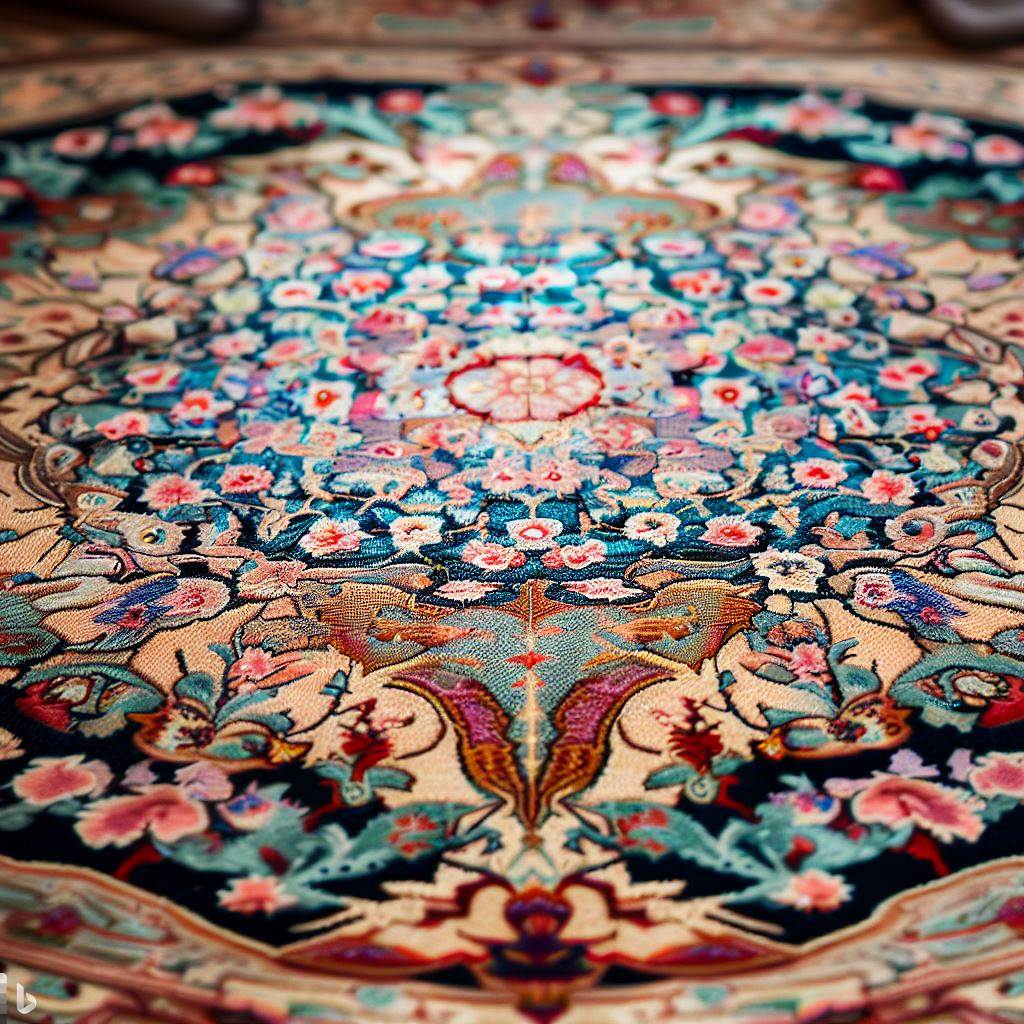The Beauty of Rug Weaving: Admiring Handmade Textile Creations
For centuries, highly skilled artisans have crafted incredible rugs using traditional weaving techniques. The timeless beauty of handmade rugs arises from the creativity and skill required to produce these textile works of art. Rug weaving represents an ancient craft that connects deeply to diverse cultures worldwide. Handwoven rugs exhibit stunning colors, intricate patterns, and nuanced texture only achieveable through meticulous handiwork. This article delves into the visual splendor, artistic qualities, cultural heritage, and lasting beauty inherent in genuine hand woven rugs.
Captivating Characteristics of Hand Woven Rugs
There are many aesthetic elements that set handcrafted rugs apart from mass produced replicas. Here are some visual standouts:
Vibrant Dyes
Master rug weavers expertly use plant, insect, and mineral based dyes to color wool and cotton yarns with incredible vibrancy. The hues appear luminous, with depth and dimension. Colors unfold in layered tones.
Complex Patterns
Motifs like flowers, animals, landscapes, geometrics, and abstract shapes come alive in rug patterns. The designs often relay cultural symbols and meaning. Intricate patterns reveal technical weaving prowess.
Dimensional Textures
Alternating glossy and matte yarns, carving loop piles, and dense knotting creates intriguing light play and texture. Rugs come alive with character through tactile weaving techniques.
Finer Details
Tiny details visibly convey the maker’s handcrafted touch. Subtle color gradients, individually knotted fringes, and delicate outlined edges showcase meticulous skill.
Backside Craftsmanship
Turning a rug over reveals technical mastery in neatly secured foundation threads, uniform knots, and clean finishing. Attention to hidden details separates refined rugs.
Weaving Methods Producing Visual Interest
Rug weaving involves numerous techniques that directly shape the aesthetic outcome:
Flatweaving
Flatweaves like kilims are tightly woven with no pile. Intricate tapestry-like patterns are formed by interlaced weft and warp threads. Flatweaves are reversible and durable.
Pile Weaving
In pile weaving, loops or knots are added to create plush surface texture. Pile rugs include shaggy flokati styles or luxurious French savonnerie. Tight, consistent knots are crucial.
Soumak Weaving
Soumak rugs have a distinctive braided appearance formed by wrapping weft threads back and forth around chunky warp threads. The surface has a slanted ribbed texture.
Dhurrie Weaving
Dhurries hail from India and feature bold geometric patterns and vivid colors. Short pieces of differently colored yarn are tightly interwoven through fine cotton warp threads.
Kilim Weaving
Kilims are woven tapestries, often with abstract patterns and motifs. Weft threads intricately interlock with the warp threads to produce the images. No knots are used.
Traditional Regional Styles Showcase Localization
Rug weaving techniques take on localized traits in different regions, making styles highly distinctive:
Persian Rugs
Extremely fine knots, lavish materials like silk, and ornate centralized medallion motifs define Persian rugs, prized for their beauty. Designs are traditional and intricate.
Iranian Rugs
Iranian rugs involve symmetrical knots that form patterns with clean lines and stylized motifs like flowers or geometrics. Traditional vegetable dyes create rich hues.
Navajo Rugs
Navajo weavers work in long vertical loom strands, producing rugs with bold Native American motifs, triangular shapes, and vibrant colors like red, grey, and ivory. Designs are often geometric.
Scandinavian Rugs
Scandinavian rugs have cheerful bold geometric patterns in colors inspired by the Nordic landscape and folk art. Designs reflect cultural traditions with symbolic meaning.
Afghan War Rugs
Afghan war rugs poignantly depict imagery related to regional conflicts such as tanks, guns, and soldiers using traditional local materials and motifs. Each one shares a story.
Artisanal Skills that Shape Beauty
Masterful hand weaving involves countless specialized skills that allow weavers to manifest creativity into rugs:
Spinning
Weavers first hand spin wool, cotton, and silk into yarn of the desired thickness and twist. Spinning contributes to the yarn’s strength, luster, and durability.
Dyeing
Dyeing the spun yarns rich hues using natural plant, insect, and mineral dyes is key. Weavers may use resist or discharge techniques to form patterns during dyeing.
Warping
Warping a loom is extremely technical, involving systematically threading hundreds of threads vertically to create the rug’s foundation. Warp color patterns factor into design.
Knotting
Tying individual knots around two warp threads is central to pile rug creation. Consistent knot density, direction, and tension ensures even pile height.
Finishing
Once complete, rugs undergo an extensive finishing process like trimming, washing, and final embellishments before being ready for use.
Cultural Traditions Embedded in Hand Woven Rugs
Rug weaving connects deeply to human cultures globally. Regional styles integrate local heritage, customs, and identity:
Family Craft
In many regions, rug weaving skills are passed down in families through generations. Young girls master techniques from mothers and grandmothers. Recipes for dyes and motifs are guarded.
Community Endeavor
Entire communities may contribute to rug production. Men raise sheep for wool while women spin and children help dye yarn. Elders instruct new weavers.
Income Source
For many cultures, handwoven rugs provide vital income. Weaving generates self-employment, allowing artisan families to stay in their villages. Rugs reflect local materials and resources.
Tribal Identity
Motifs relay tribal affiliation and meaning. For example, Navajo weavers use symbols that reflect their beliefs, stories, and values. Regional styles denote cultural pride.
Ceremonial Use
Special occasion rugs are woven for rituals and ceremonies. Wedding rugs may contain fertility symbols. Prayer rugs incorporate religious imagery. Rugs hold deep significance.
Appreciating the Lasting Beauty and Legacy of Hand Woven Rugs
A handmade rug represents so much more than just a floor covering. Each one embodies generations of knowledge, telling a unique story of the artisan culture from which it originated. Beyond beauty, hand woven rugs express identity, values, and ways of being. Their careful craftsmanship creates lasting heirlooms. No rug will ever be exactly the same. Through admiring, collecting, and incorporating these textiles into contemporary homes, we keep their legacy alive and visibly honor rug weaving’s rightful status as a fine art.
